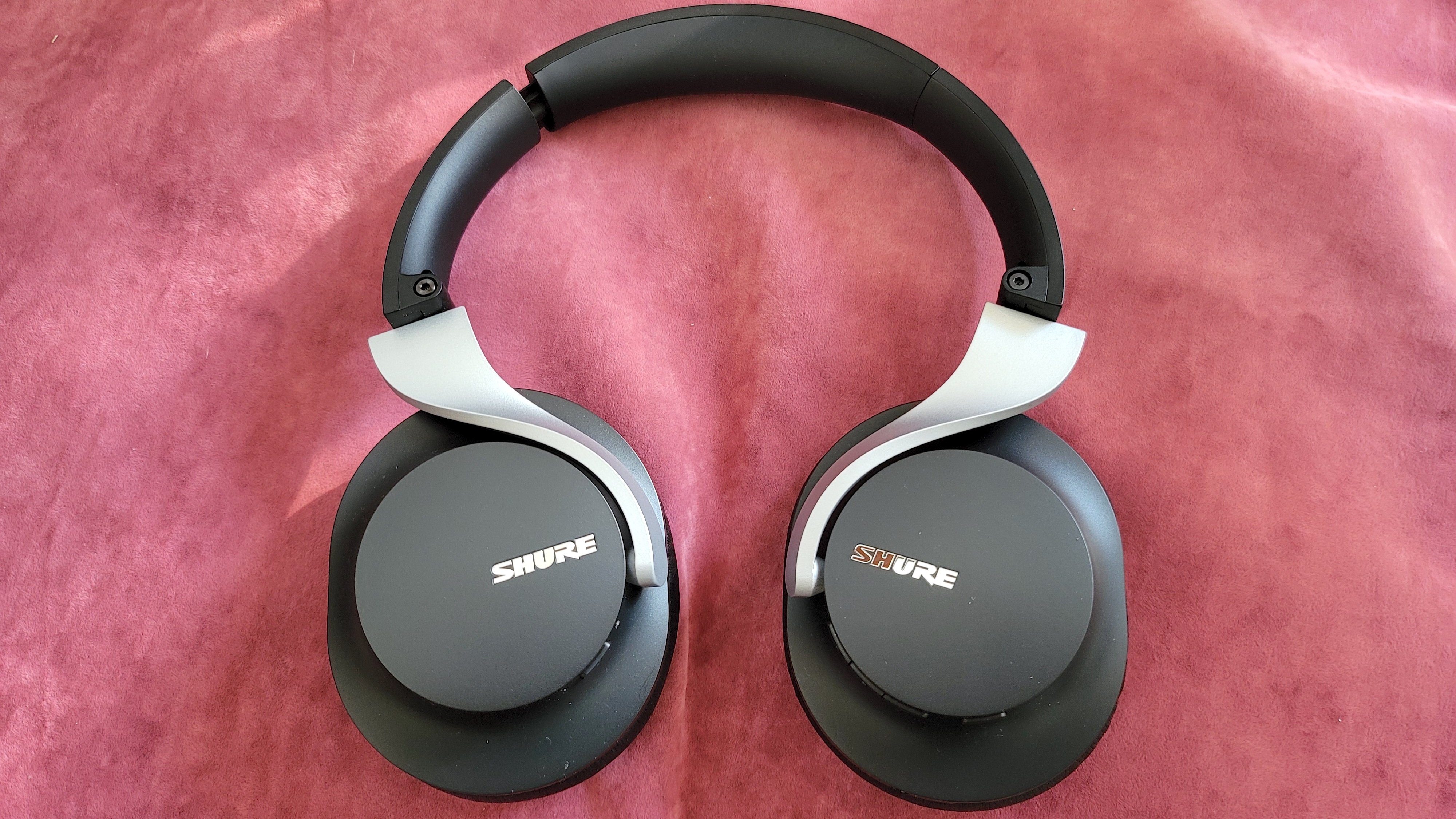Laptop Mag Verdict
The $249 Shure Aonic 40 is a standout noise-canceller with a weight issue.
Pros
- +
Accurate sound
- +
Superb ANC and ambient listening modes
- +
Fancy, well-built design
- +
Stable battery life
- +
Competitively priced
Cons
- -
Heavy and uncomfortable
- -
Unfavorable control scheme
- -
Companion app is a bit buggy
Why you can trust Laptop Mag
Announced at CES 2022, the Shure Aonic 40 has made its way onto store shelves, hoping to make a splash in what’s already an overcrowded noise-cancelling market. What makes these wireless headphones any different than the rest? Flagship sound.
- Our expert picks for the best noise-cancelling headphones, per budget and style
- Check out our Bose 700 review
- …and our Sony WH-1000XM4 review
Shure’s audio lineage is indisputable, and the Aonic 40 does a remarkable job of not dropping the sonic baton. Its robust ANC technology is some of the finest in the category. Add a gorgeous design, intuitive connectivity, and powerful mics to the Aonic 40’s list of attractions.
Heft and shoddy controls keep Shure’s latest release from achieving a higher score. Flaws aside, the Aonic 40 checks enough boxes to make our best noise-cancelling headphones list.
Shure Aonic 40 review: Availability and price
The Shure Aonic 40 has an MSRP of $249 and can be purchased at major online retailers, including Amazon and B&H, or directly from Shure. Colors are limited to Black or White/Tan. Bundled with the purchase are a leather carrying case, USB-C charging cable, aux cable, and owner’s manual.
These noise-cancellers face stiff competition at all price points. Inexpensive gems like the $149 Cleer Enduro ANC deliver great sound on a budget and sub-$250 models like the Microsoft Surface Headphones 2 bring an extensive feature set to the table. Then come category leaders like the $379 Bose 700 and $299 Sony WH-1000XM4 that offer elite performance across the board.
Be sure to bookmark our headphone deals page for the latest sales.
Shure Aonic 40 review: Design and comfort
The build quality is premium on these cans. Materials consist of aluminum and hard plastic, topped with nice faux leather on the earpads. Every component feels substantial, from the buttons to the hinges to the padding. The curved and twisted metallic piece connecting the headband to the earcups is a distinctive touch, while the matte finish with shiny embossed logos scream luxe. Even the carrying case is well designed, covered in smooth leather, and providing plenty of protection and space to store everything.
Sign up to receive The Snapshot, a free special dispatch from Laptop Mag, in your inbox.

If only comfortability was as enticing. Powerful circuitry and sturdy materials often add unwanted weight, and, unfortunately, that is the case here. Wearing 11 ounces on your skull for a few hours is straining on the head and neck. Shure could have learned from Bose and Sony on how to craft lighter noise-cancelling headphones without compromising the overall design.
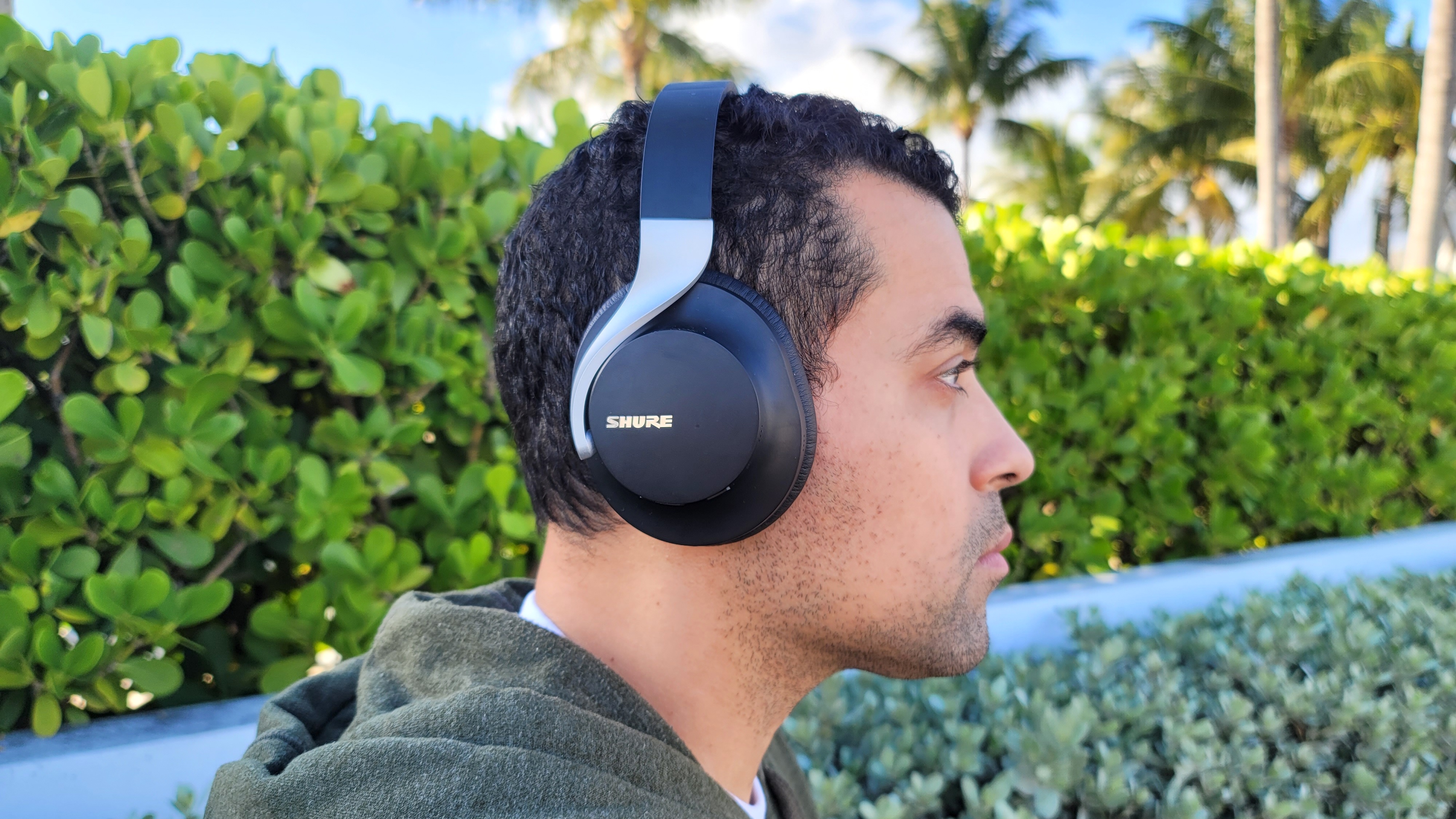
Fit is another concern for listeners with low pain thresholds. As snug as the padding feels on both the ears, the clamp force is tight. I had to take off the headphones every 45 minutes to give my head a breather; they felt excruciating when locked on a tight setting.
Shure Aonic 40 review: Controls and digital assistant
Shure kept the control scheme tradition by adding physical buttons to each earcup. On the left is a power/Bluetooth button and the right has a multifunctional button flanked by two volume buttons and a listening mode button underneath them. No touch pads on the exterior. No motion sensors for auto-pause when taking off the headphones.
I’m not a fan of the execution. For one, the buttons are too stiff. You’ll have to press hard to enable playback, call management or the digital assistant. Another issue is they’re difficult to identify since they all feel the same and don’t stretch out far enough. I also don’t appreciate the noise control prompt being disabled right out the box; it drove me nuts figuring out whether ANC was on or off.
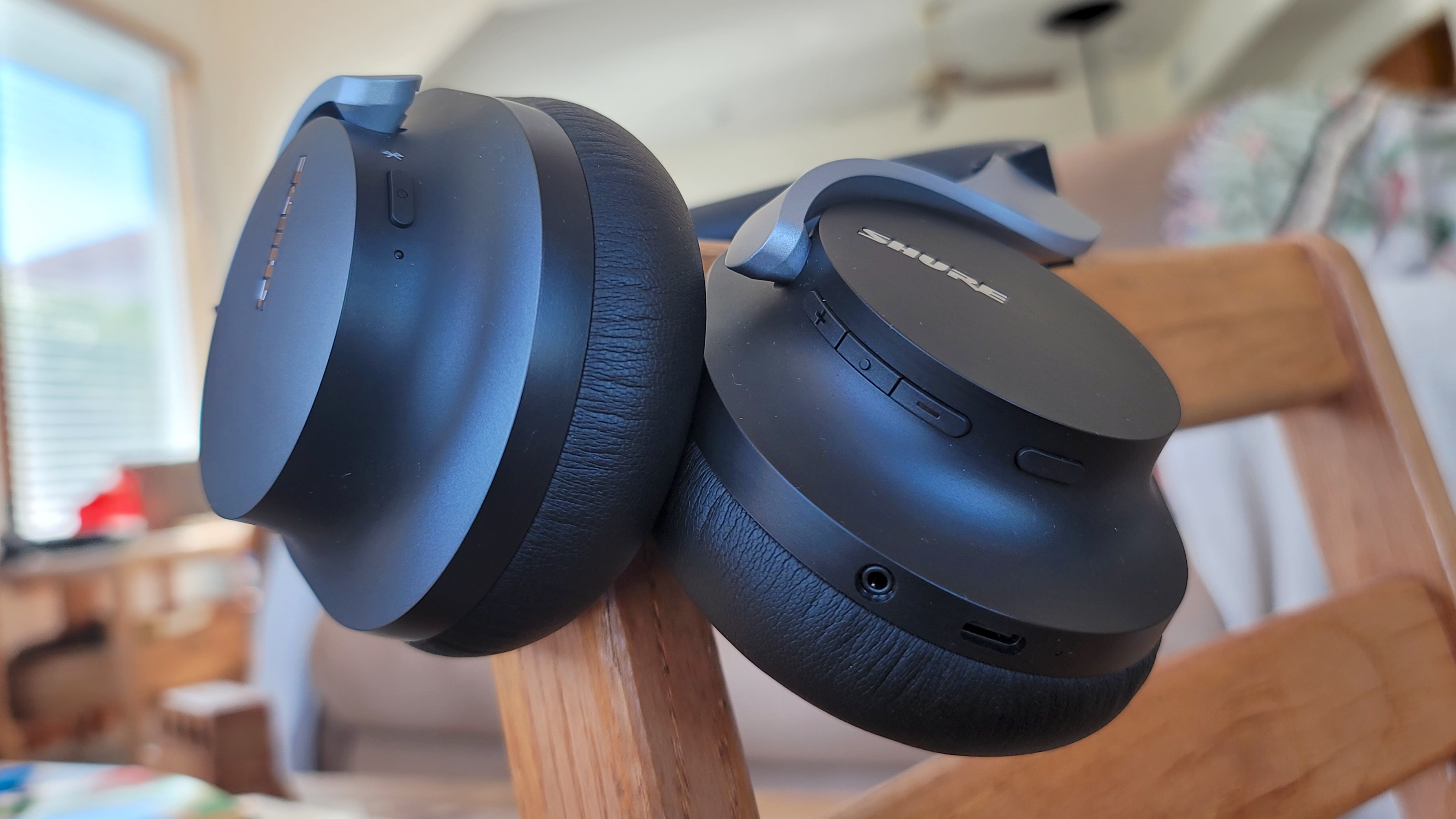
Siri, Google Assistant, and Bixby all work well. Shure’s microphones demonstrated solid speech recognition, picking up every syllable and long-winded inquiry, even in busy environments. All three bots returned results as quickly as they received them.
Shure Aonic 40 review: Audio quality
Shure doesn’t get the love they rightfully deserve as a premier audio manufacturer. The Aonic 40 will have you singing their praises, thanks to a dynamic sound signature that can be tuned via customizable EQ. It does require a little more audio knowledge to use properly (adjustments can be made to bandwidth, frequency, and gain), but the truest audiophile can have a ball tweaking sound to their liking.

Those intimidated by the terminology can settle for any of the 7 well-engineered EQs that emphasize bass, treble, loudness, or vocals. Feel free to experiment with each one, but for this review, I focused on the default EQ, which produces full and precise sound.
The Weeknd’s “Best Friends” radiated with 80s’ synth-pop vibes and featured a staccato keyboard bassline that the Aonic 40’s drivers reproduced superbly. Mids were balanced and warm, bringing a charm to the crooner’s cadent voice over the thumping production.

Jumping into the Kanye West’s “Runaway,” I was shocked by how clear and fine-tuned the introductory piano chords sounded, along with the excellent reverberation. However, I was more blown away by the headphones’ ability to stabilize the record’s excessive lows, giving the funky drums and mushrooming bassline lots of punch minus any distortion.
Jazz records give me the greatest sense of frequency range, and the Aonic 40 happily met my expectations. The deep double bass, swinging horns, and tinny cymbals on Leroy Hutson’s “Cool Out” blended beautifully, making for one hell of a melodic, intimate listen. Live performances were also given an immersive presence, as exemplary on Latin Jazz classics like Eddie Palmieri's “Pa Huele.” You could hear the small pockets of crowd interaction, while still enjoying the track’s magnetically percussive resonance.
Shure Aonic 40 review: Active noise cancellation
Three-level noise cancellation (Light, Normal, Max) gives you full control of ambient sound blockage. It’s tough discerning between the trio, but the feature is highly effective for peaceful listening. As expected, Max is suited for dealing with all frequencies and should always be your go-to. Be mindful that it sucks up the most juice, so turn off ANC when it isn’t required.
Using the headphones during work hours provided atmospheric relief by neutralizing common household distractions. Appliance timers, loud family chatter in the kitchen, and my infant boy’s shrieks never made their way onto the soundscape. The Aonic 40 handles low frequencies best, shutting out droning sounds like the ones coming from our washing machine or airplanes that flew over the house.
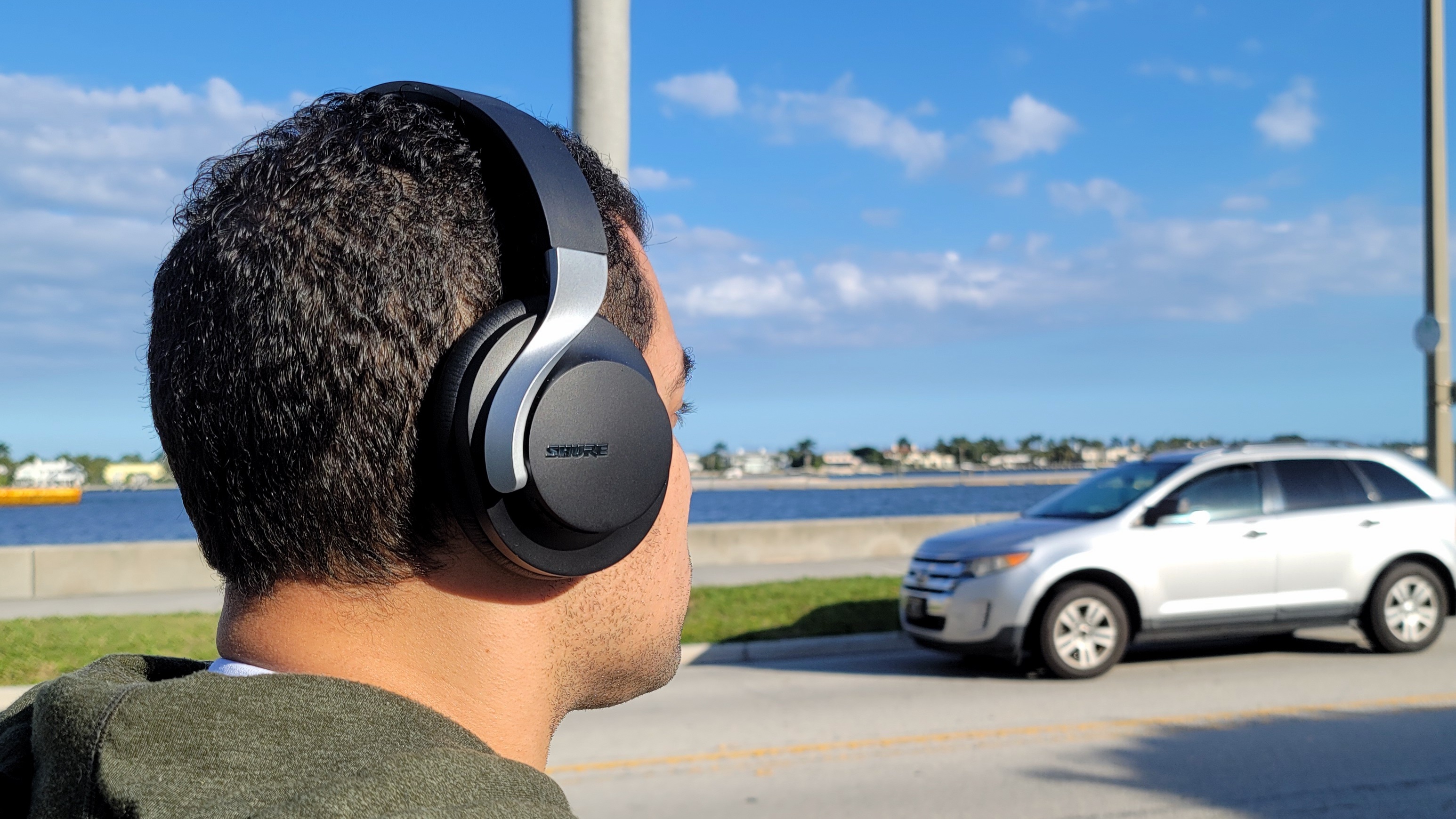
Only a small number of wireless ANC headphones can suppress high-frequency noises at an elite level. Add these to the list. It’s been a nightmare as of late getting my baby to nap during the day. Shure’s ANC technology made it bearable enough to work through by keeping his screams low enough to focus on tasks. Other noises like bird chirping and whistles went unheard. Shure’s mics won’t mute blaring sounds like sirens or whistles, but neither are noisy enough to pull you away from whatever’s playing on the headphones. Wind resistance is also strong and minimizes whisking effects.
Raising Environment serves as the Aonic 40’s transparency mode. It has 10 adjustable levels and setting the feature to max lets in the slightest sliver of noise. The mics will sense stuff like the headphones rubbing against fabric or the whooshing sound created when walking in a quiet room. That’s awesome if you’re trying to hear every detail possible from afar, but it can also be painful if something like a bullhorn goes off a few feet away. Setting it to level 7 is perfect for increasing environmental awareness and engaging in clear-sounding chats.
Shure Aonic 40 review: App and special features
ShurePlus Play is the companion app and hub for all features tied to the Aonic 40. I already touched on hallmarks like ANC, adjustable ambient listening, and the EQ with presets. What more is there? Very little.

You can turn on the Busy light function to activate a red light on the headphones when taking calls in the dark. There is a power-save mode that places the Aonic 40 into sleep mode when inactive after a set time. Apple Music integration and a USB Audio mode to prioritize “full-quality audio” or mic performance on conference calls are available as well. Other notables include a battery level indicator, control customization, firmware updates, and an interactive user guide.
The app does misbehave at times, especially when connected to two devices at the same time through multipoint technology. It crashed a lot and asked to re-pair the headphones when my mobile device already established a connection.
Shure Aonic 40 review: Battery life
Battery life is rated at 25 hours with ANC on. This places the Aonic 40 close to the Bose 700 (20 hours) and QuietComfort 45 (24 hours), but several hours lower than the WH-1000XM4 (30 hours) and far less than the Enduro ANC (60 hours). It’s still sufficient for casual listening or travel. The 10 days of moderate use (2 hours daily) I got on a full charge was satisfying.
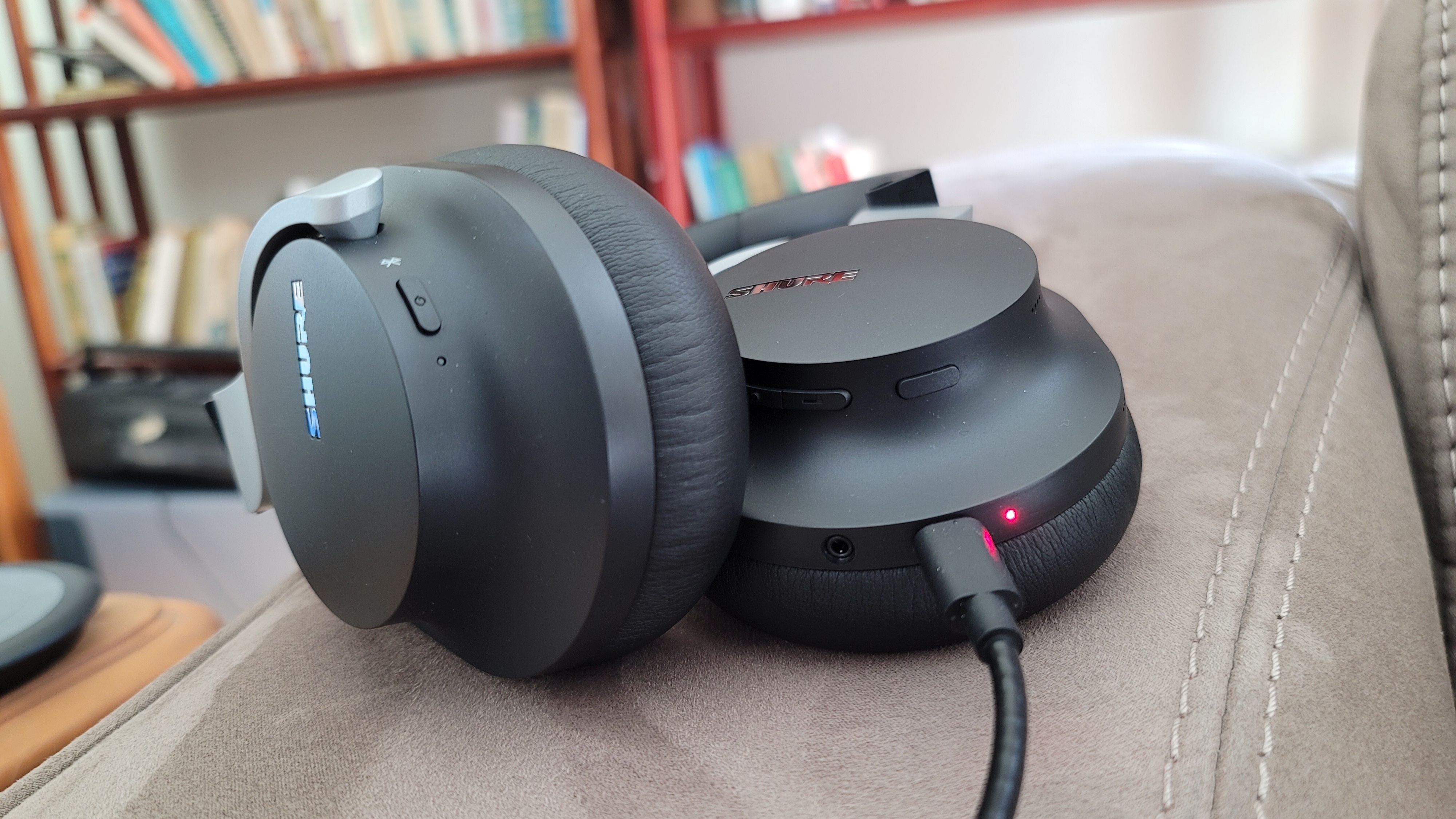
Shure doesn’t list what battery life is with ANC off because these headphones have no option to disable the feature.
Frequent flyers that want to ensure some playtime on the trip back home will find relief in the Aonic 40’s quick-charging capabilities, netting you 5 hours of use on a 15-minute charge. This is 1 hour more than what the Aonic 50 generates in the same charging time.
Shure Aonic 40 review: Call quality and connectivity
Voice and video calls sound great on these headphones. Any conversations I had outside were audible on both ends, even in gusty conditions where the missus heard me loud and clear, despite lots of background noise. The beamforming mics could have done a better job of blocking out incidental sounds. Indoors was even more rewarding as Zoom calls sounded crisp, leading to a few compliments from clients and friends.

Bluetooth 5.0 made for a reliable wireless experience. Range maxes out at 60 feet, which is nearly double the length of most wireless headphones, letting me roam freely around the house while my connected device charged in the office.
Shure Aonic 40 review: Verdict
Shure accomplishes its goal of creating a worthy Bose rival at a reasonable (and lower) price point.
The Aonic 40 has the noise-cancelling and sonic prowess of a $400 model, and it can be had for $250. You get incredible frequency range that complements all music genres. Its ability to block out nearly 85% of ambient noise is impressive. The design is also handsome, though the control scheme and weight are burdensome. Shure needs to refine its companion app as well.
Paying extra for the Bose 700 or Sony WH-1000XM4 spares you from these nuisances and presents better noise cancellation and features. If you’re still not ready to break the bank on prime noise-cancellers, then the Aonic 40 can serve as a terrific backup.
Alex Bracetti writes about all things related to audio at Laptop Mag. From insightful reviews of Sony earbuds to hands-on experience with the Beats Studio Pro, Alex covers everything you need to know in order to buy the best pair of headphones or earbuds. Alex has also written about speakers and audio apps. Outside of Laptop Mag, Alex's work has appeared in our sister site Tom's Guide.
